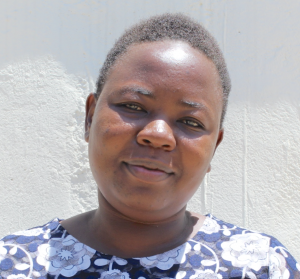Please note, original photos were taken before the pandemic.
Mwembe Primary School began in 1978 with just 23 pupils. Today, there are 292 students and 14 teachers, but still no source of water on school grounds.
The lack of water on campus means the entire school relies on students carrying water from home for all of the school's drinking, cooking, and cleaning needs. But the students can never carry enough to meet all of these needs. Still, it is a daily requirement the school has no choice but to enforce.
A normal school day for a student at Mwembe Primary School begins at 7:30 am when students arrive in school carrying water from home in their jerrycans. This water is for the school cook's use in cooking lunch and washing dishes. Classes begin at 8:00 am and run until 12:45 pm with a late-morning break, unless the morning water collection was not enough to cook lunch. In that case, students are sent back home during their morning lessons to fetch more water.
At the lunch break, the pupils carry their jerrycans home once more so they can come back with more water for the afternoon. This second round of water is used to clean classrooms and latrines at 3.00 pm, when pupils finish their learning for the day before they go home. There is not enough water to do their cleaning routine thoroughly, however, and there is never enough for handwashing. Sometimes dishes must also be left dirty at the end of the day.
There are many complications to an entire school relying on students for water. Pupils often arrive late and tired from their burdensome walk, as they also must carry their books and belongings every day. Sometimes students are then too tired to focus well in class, impacting their performance.
"We are not able to clear our syllabus at the end of the year because most of the time we are out looking for water, and this has contributed to poor results in our national examinations. It's our prayer that our school will be one of the schools that will benefit from WASH facilities," said pupil Margret.
Since teachers and parents alike cannot monitor the children as they fetch water at home, no one is sure of which source is safe for consumption and which is dirty. Even clean water is contaminated by pupils' dirty containers or unwashed hands as they carry the containers to school. And once at school, the water is combined for use, so even 1 contaminated source means everyone is at risk of water-related diseases.
The headteacher reported that the performance of the school has really gone down because most pupils are always absent from school due to health problems mainly related to waterborne diseases. The rate of water-related diseases is very high and a lot of money is spent on medication instead of paying school fees for the pupils to be at school throughout the year.
"Precious time for both teachers and pupils is wasted because at times, we take the pupils out of class to go and get water so that meals can be prepared. We are unable to clean our sanitation facilities daily because we lack water within our school compound," explained teacher Francis Ingairu.
What We Can Do:
Rain Tank
A 75,000-liter rainwater catchment tank will help alleviate the water crisis at this school. The school will help collect the needed construction materials such as sand, bricks, rocks, and water for mixing cement. We will complement their materials by providing an expert team of artisans, tools, hardware, and the guttering system. Once finished, this tank will begin catching rainfall that will be used by the school’s students and staff for drinking, handwashing, cooking, cleaning, and much more.
We and the school strongly believe that all of these components will work together to improve standards at this school, which will help lead to better student academic performance and will help to unlock the potential for these students to live better, healthier lives.
Handwashing Stations
There is currently nowhere for students to wash their hands after using the latrines or before eating lunch, let alone the water to do so.
The student health club will oversee the 2 new handwashing stations we will provide, and make sure they are kept clean and in working condition. The club leaders will fill the handwashing stations with water daily and make sure they are always supplied with a cleaning agent such as soap or ash.
VIP Latrines
2 triple-door latrine blocks will be constructed with local materials that the school will help gather. 3 doors will serve the girls while the other 3 will serve the boys. All of these new latrines will have cement floors that are designed to be easy to use and to clean. And with a rain tank right on school property, there should be enough water to keep them clean.
Training on Health, Hygiene, COVID-19, and More
We will hold a 1-day intensive training session with students, teachers, and parents. This training will cover a wide range of topics including COVID-19 symptoms, transmission routes, and prevention; personal and environmental hygiene; and the operation and maintenance of the rain tank, latrines, and handwashing stations. There will be a special emphasis on handwashing.
Our team of facilitators will use a variety of methods to train, including participatory hygiene and sanitation transformation, and asset-based community development. We will initiate a student health club, which will prepare students to lead other pupils into healthy habits at school and at home. We will also lead lectures, group discussions, and provide illustrative handouts to teach health topics and ways to promote good hygiene practices within the school including handwashing and water treatment. We will then conduct a series of follow-up trainings before transitioning to our regularly scheduled support visits throughout the year.



 Rehabilitation Project
Rehabilitation Project











































